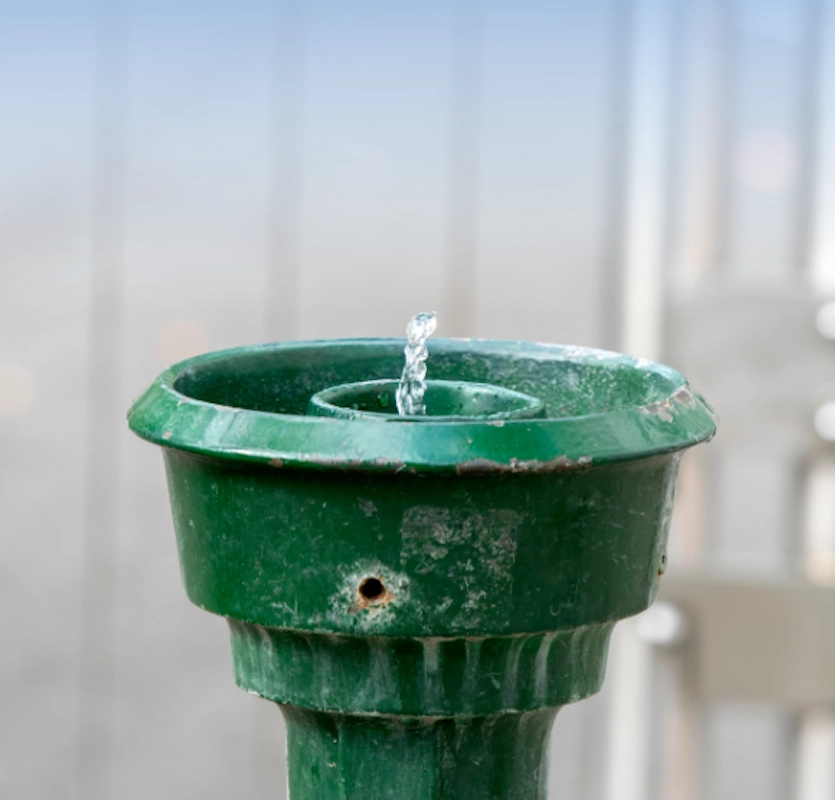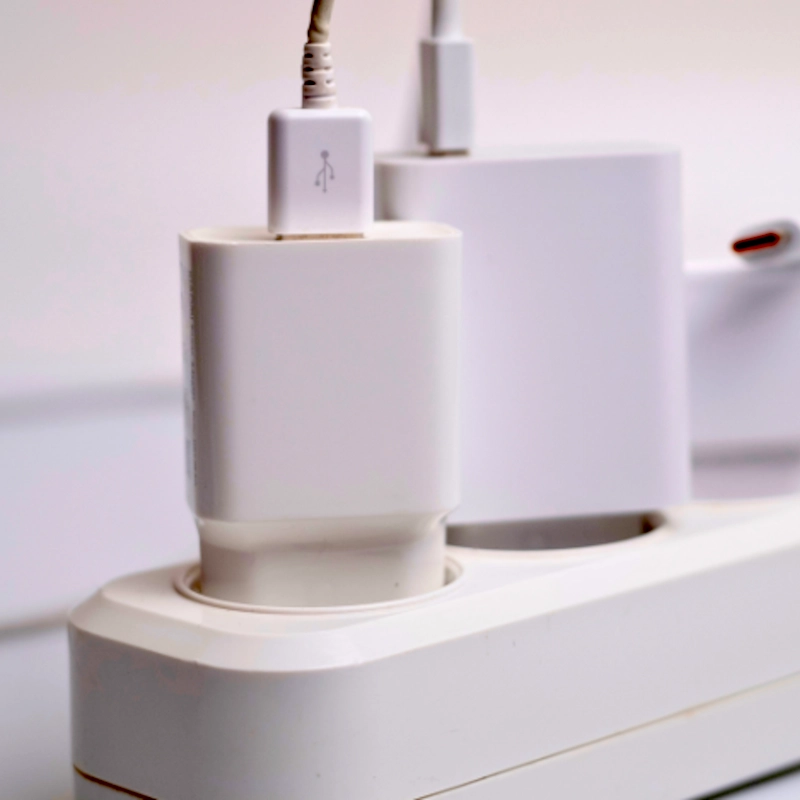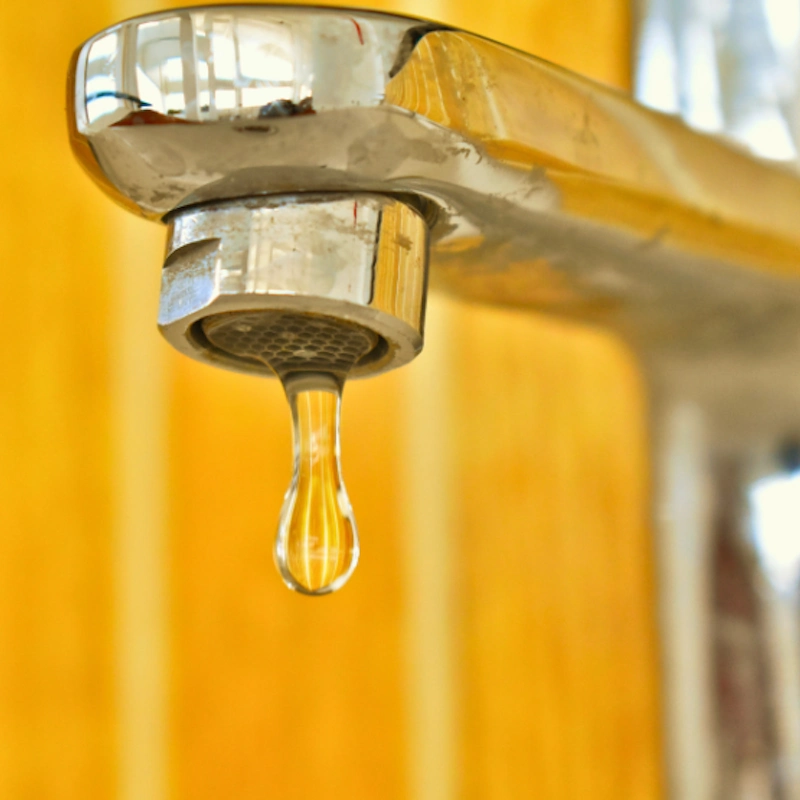Iceland Plug Types: What Travelers Need in 2026
Sarah Pardi - December 23, 2025
Home > Travel Safety & Health > Iceland Plug Types: What Travelers Need in 2026
Share this post
Travelers heading to Iceland have a lot to do before they board their flight. From fulfilling entry requirements and getting the right travel insurance to booking accommodations and making a list of all of the incredible things you want to do while abroad, it definitely takes some forethought to prepare.
There is one thing that a lot of people forget until the very last minute, and if that's you, no judgment. That thing is making sure you can charge your electronics while in Iceland.
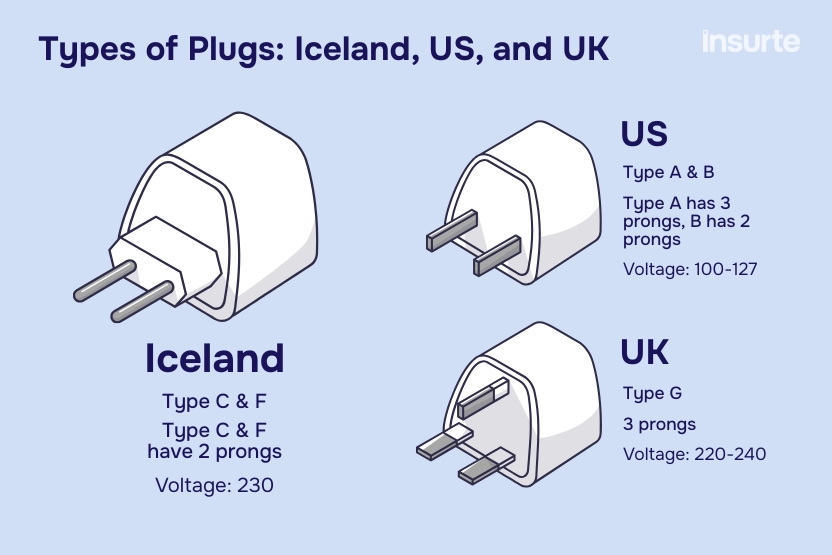
The adapter you need for Iceland
Iceland uses both Type C and Type F plugs. They have two cylindrical prongs (or pins, as they're called in the electrical world).
This is good news for anyone who already has a travel adapter for Europe lying around, as it is likely the one you need. For instance, France runs on the same plug, socket, and even voltage.
If you don't already have a compatible travel adapter, no problem. Figuring out which one you need is quite simple.
If you're traveling from the States
If you're traveling to Iceland from the US, you will need to get a travel adapter to plug in your devices in Iceland.
The US uses Type A and Type B plugs, so you need to get an adapter that has a socket for Type A/B plugs and an output (or plug) that is Type C or Type F.
If you're traveling from the UK
When heading to Iceland from the UK, you will need a travel adapter.
The UK uses Type G plugs, so you will need to get an adapter that has a socket for Type G plugs and a Type C/F prongs.
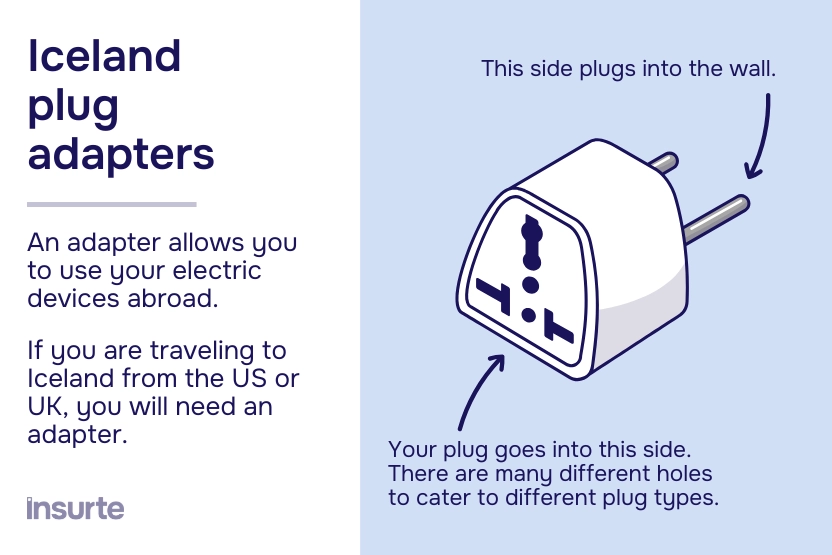
Where to get Iceland travel adapters
You can find travel adapters at department stores, electronic stores, online, in airports, and in tourist shops at your destination.
In department stores, you can typically find them in either the travel section (think luggage and locks) or the electronics section.
If you're shopping online, try searching something like "travel adapter iceland from US" or "UK to Iceland travel adapter".
Want to protect your belongings?
Get travel insurance that covers lost or stolen luggage!
A small word of caution, if you plan on getting an adapter at the airport or your destination. First, you might not find one. Usually you will, but it isn't 100% guaranteed, of course. Second, because of the convenience, you'll find that they're usually more expensive in terminals and tourist shops.
Universal adapters
While they are bulkier and typically cost a bit more, universal adapters can be a wise choice for frequent international travelers. They have several inputs and several plug types that pop in and out, depending on what you need and where you're going.
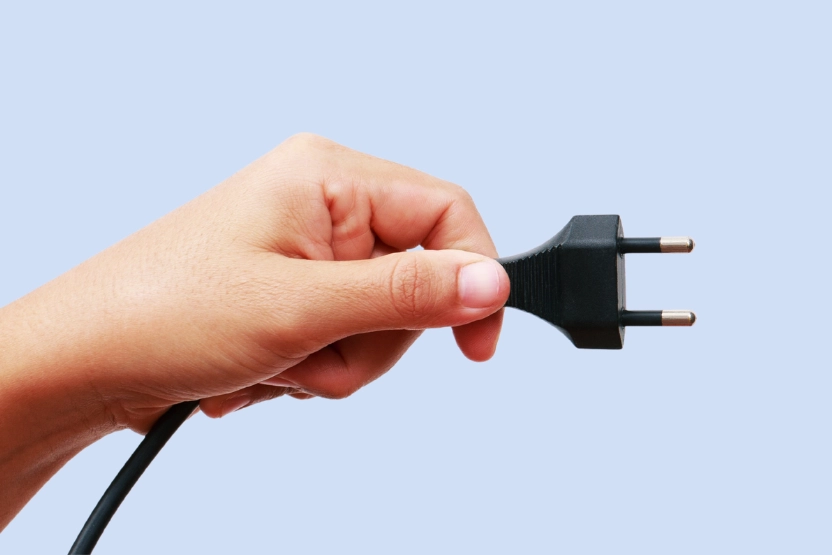
Iceland power converters: Do you need one?
The second thing you need to make sure you've considered is whether or not you need a power converter to use your devices in Iceland.
The answer depends on a few things.
- The country you're coming from (i.e., where your electronic devices were purchased).
- Your destination and what voltage they use.
- Which electronic devices you're bringing with you.
Different continents can run on different voltages. Iceland runs on 230 volts.
If you're traveling to Iceland from a country with a different voltage, you may need to get a power converter (sometimes called a transformer) to safely use your electronics.
That said, it also depends on what exactly you're bringing with you.
If you're only bringing your phone, laptop, and a tablet, for instance, you typically don't need a power converter. This is because these kinds of electronics have been built to withstand varying levels of volts. They're considered dual-voltage products. (That said, double check that your specific device is dual-voltage, as some may not be, particularly older models.)
If you're bringing other personal electronics, such as blow dryers, curling irons, electric razors, or even small coffee machines, you need to consider getting a power converter.
Here's why.
Personal electronics are designed to operate with a specific level of voltage. In layman's terms, volts are the "surge" of electricity, or the strength that electricity is pushed through the wires and into your electronics.
If a country runs on a higher level of voltage than your home country, it means that the surge is stronger, and your devices weren't designed to handle that.
The same is true on the opposite. If your destination has a lower level of voltage than your home country, the products you have were designed to need a higher electrical surge to operate adequately.
Also, as a note, travel adapters and power converters are two separate things.
- Travel adapters "change" the shape of your plug so it fits in sockets.
- Power converters/transformers alter the voltage so it's compatible with your destination.

Do US travelers need a power converter for Iceland?
If you're bringing hair tools, personal electronics, and small appliances with you, you need to consider purchasing a power converter (in addition to a travel adapter).
Iceland runs on 230 volts, whereas the US runs on 120-127. Because of that, your personal electronics weren't designed to have such a strong surge.
Using a higher voltage can cause your electronics to:
- Overheat, posing a potential fire risk.
- Spark/short-out, which also poses a fire risk, as well as a risk of electrical shock.
- Malfunction/die completely.
Getting a power converter is a must if you're bringing electronics that need it, like hair tools.
That said, some travelers choose not to get a converter and "run the risk", but that is not recommended.
Do UK travelers need a power converter for Iceland?
The UK runs on the same voltage as Iceland, so a power converter is not needed, regardless of the type of electronics you're bringing with you.

FAQs: Using devices in Iceland
Related posts
Upcoming travels ? Get Insured !
Find the right insurance for your trip by using our powerful comparison tool!
Sarah Pardi - December 19, 2025
Sarah Pardi - December 12, 2025
Sarah Pardi - December 11, 2025
Sarah Pardi - December 4, 2025


